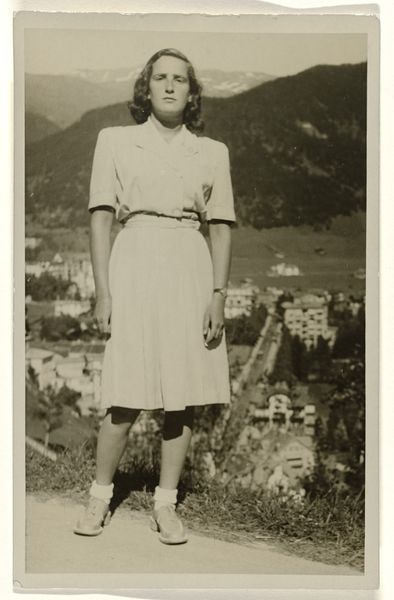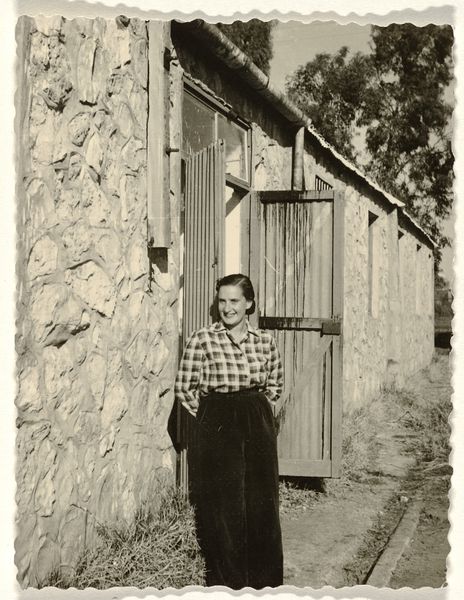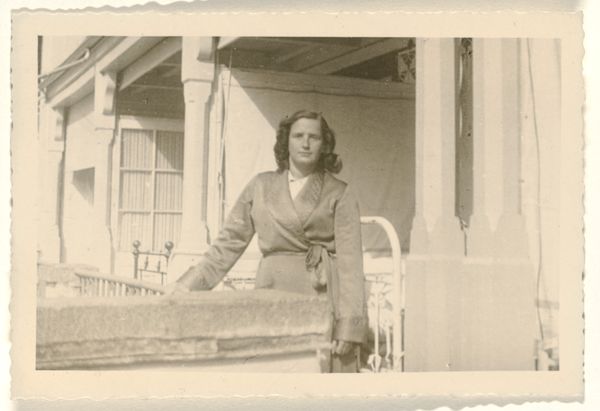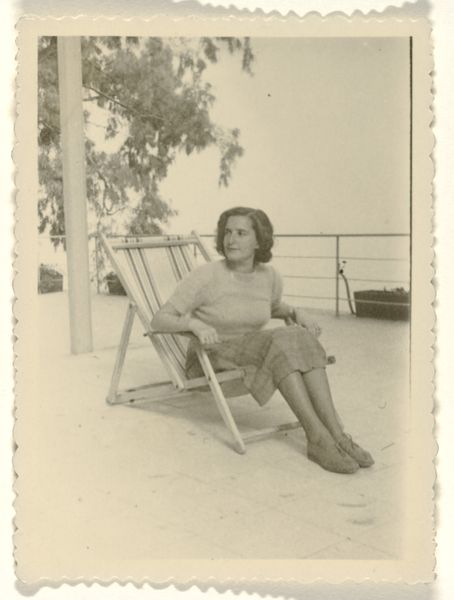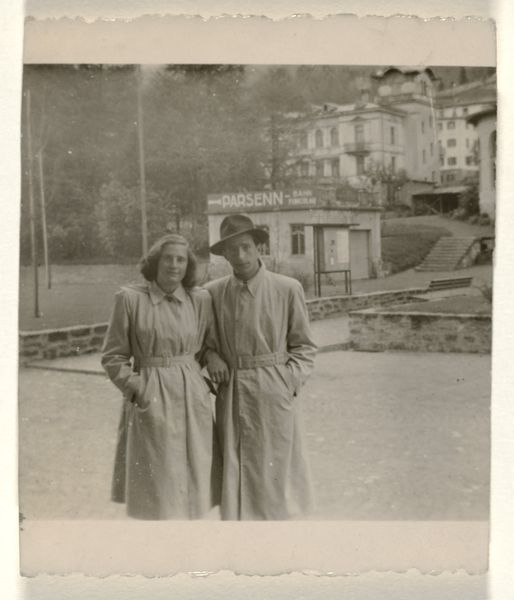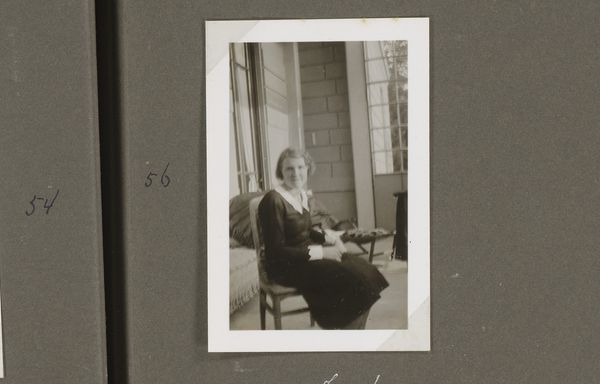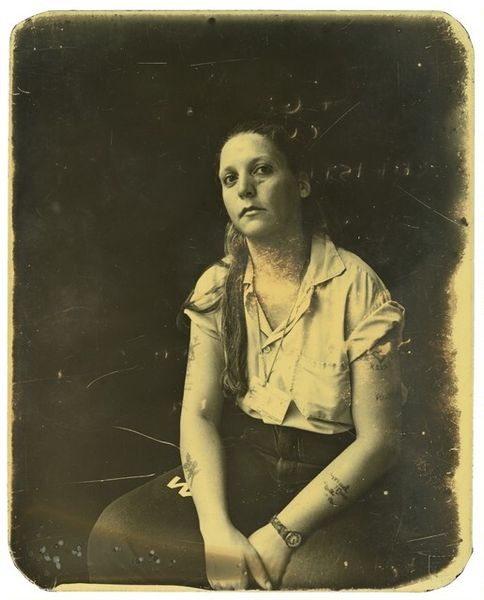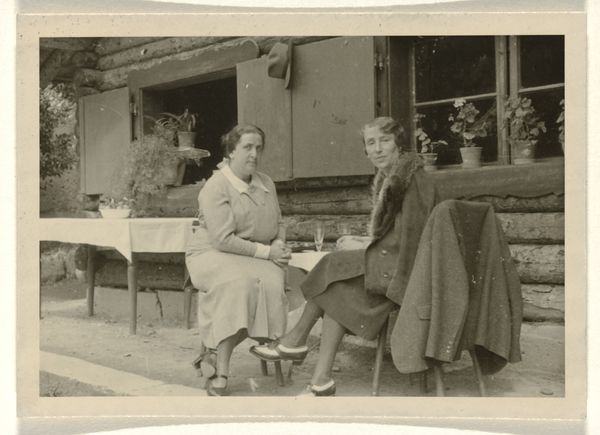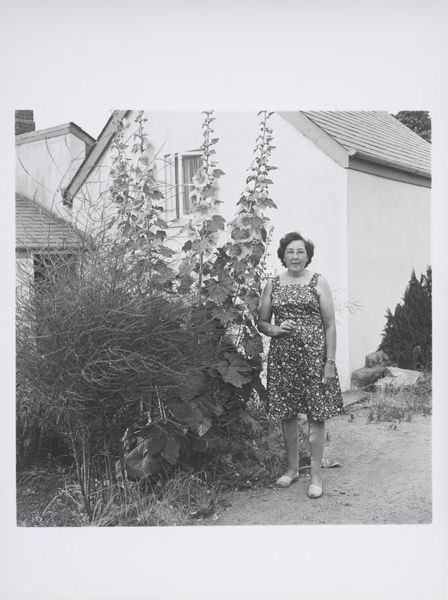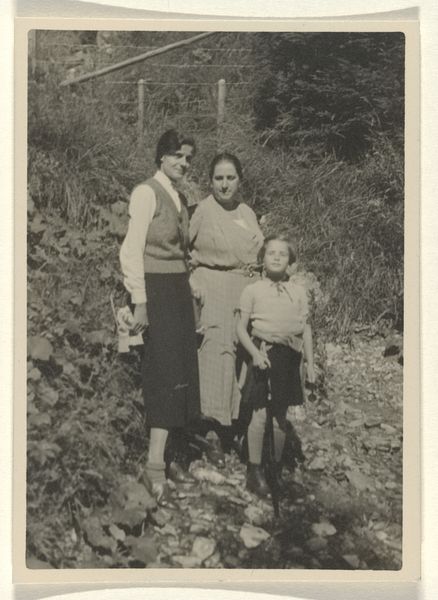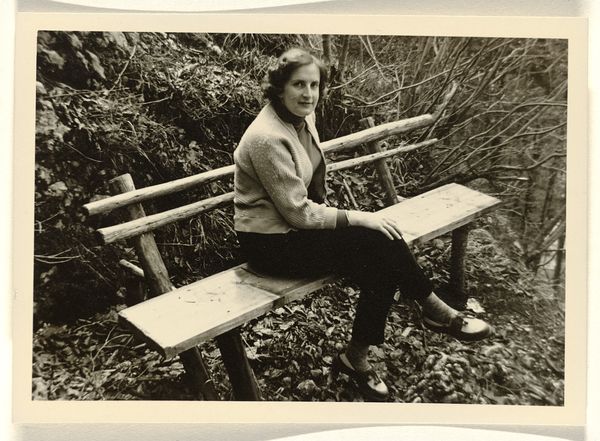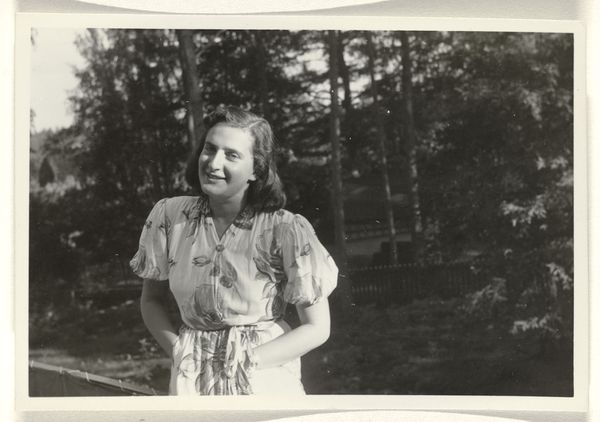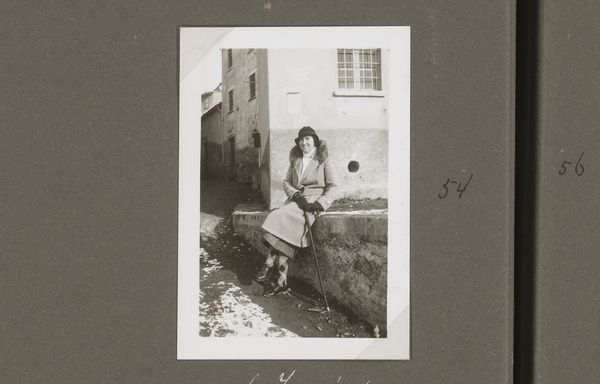
Isabel Wachenheimer staand in donkere kleding voor het Joods sanatorium Etania in Davos, 1945-1947 Possibly 1945 - 1947
0:00
0:00
photography, gelatin-silver-print
#
portrait
#
print photography
#
archive photography
#
photography
#
historical photography
#
gelatin-silver-print
#
modernism
Dimensions: height 95 mm, width 65 mm
Copyright: Rijks Museum: Open Domain
Curator: This gelatin-silver print, possibly from 1945 to 1947, captures Isabel Wachenheimer standing in dark clothing before the Jewish sanatorium Etania in Davos. The anonymity surrounding this photograph certainly sparks curiosity, doesn't it? Editor: It does. There’s an immediate sense of melancholy about this image. The monochromatic tones, her subdued stance, and the almost severe dress all contribute to a feeling of quiet resilience in what must have been a difficult time. Curator: The sanatorium itself serves as a crucial context here. In the post-war years, it acted as a refuge, a place of healing for Jewish survivors of the Holocaust. Editor: Exactly. Isabel’s posture, almost leaning into the sanatorium, speaks volumes about seeking sanctuary, both physically and emotionally. The backdrop isn't just a building; it symbolizes survival. I see themes of trauma and healing intersecting, especially poignant when viewed through a lens of gender. Curator: You're right; the photograph subtly challenges traditional notions of heroism. It captures resilience, not on a battlefield, but in a sanatorium. A recovery space, if you will. We often forget about those quieter, internal battles for wellness. Editor: And her gaze…there’s a directness to it, even in its reserve. She seems to acknowledge the camera, or maybe it's an awareness of her identity, of what she’s endured and continues to carry. It asks us to acknowledge her humanity. Curator: Considering photography’s development at the time, and how it was used to document so many things in those years, do you feel it serves as historical witness here, or something more? Editor: I would argue it operates on multiple levels. On one level it bears witness, placing her and that historical institution on record. However, it also prompts critical engagement. Whose story gets documented, how, and to what end? Isabel is identified here only by name. I believe these aspects elevate the work beyond the strictly documentary. Curator: Ultimately, this image provides a touching lens through which to explore postwar identity and recovery. Thank you for those important thoughts. Editor: The photograph also emphasizes the continuing importance of acknowledging those hidden chapters of history.
Comments
No comments
Be the first to comment and join the conversation on the ultimate creative platform.
